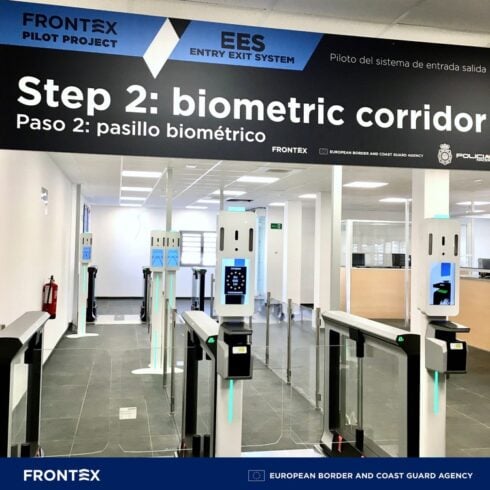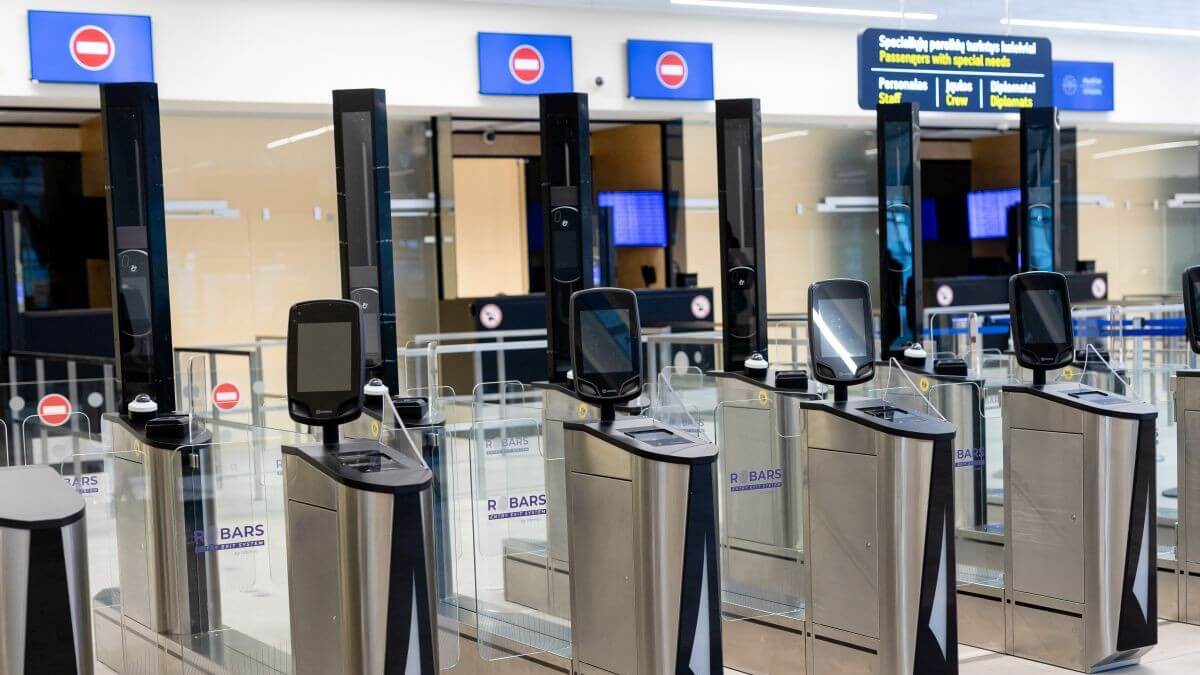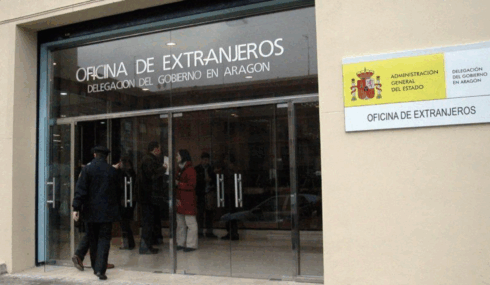BRITISH travellers will face fingerprinting, photos and binding questions at EU borders from October once the new Entry/Exit System (EES) comes into force on October 12.
The digital scheme will apply to all non-EU citizens entering the Schengen zone, including UK passport holders, although it will be rolled out incrementally over a six month period at first.
It replaces the familiar manual stamp with a central EU database that records who is coming and going.
In a demonstration filmed for The Independent, travel correspondent Simon Calder showed exactly how the process will work.
Passengers first place their passport on a kiosk screen, which verifies the document before telling them to remove it.
READ MORE: Huge queues and travel chaos at Spain’s busiest airport as strike action hits holidaymakers

A live photo is then taken – ‘smarten up, no smiling,’ Calder jokes – while green lights signal success. Travellers are then asked to press four fingers of their right hand on a biometric reader until the system captures the prints.
Then the questions begin.
The kiosk asks whether the passenger has proof of accommodation, with options ‘yes’, ‘no’ or ‘don’t know’.
Calder points out that under Schengen law, the correct answer must be ‘yes’, even if many holidaymakers are not sure where they will be staying.
READ MORE: Summer travel bug: Doctors warn heat and holidays are fuelling gastro outbreaks
A second question asks about return travel, but Calder stresses that the law actually requires proof of leaving the Schengen area, not necessarily a return flight home.
Travellers are also asked whether they have sufficient funds for their stay and whether they hold medical insurance.
Calder notes that technically all British citizens in France are covered by the Global Health Insurance Card, though the kiosk question seems framed more narrowly.
He warns that these answers are binding and could be checked by an officer. “You may be asked to provide proof,” he says, reminding viewers that this is not just a formality.
Once the questions are completed the machine displays a message instructing passengers to prepare their documents and proceed to a border crossing point.
Calder makes clear that this is not the end of the process.
Travellers must still present their passport to an officer or at an e-gate, and for at least six months they will also have their documents manually stamped.
READ MORE: The top 10 European airports most likely to suffer travel chaos when the EES kicks in next month
He describes this as ‘double red tape’, predicting longer queues as the system beds in.
The EU says that once the roll-out is complete – expected by April 2026 – stamps will be phased out altogether.
After the initial registration, future crossings should be quicker, relying on facial recognition rather than fresh fingerprinting, unless a passport has changed or long gaps have passed between entries.
Officials argue the new system will strengthen security, cut fraud and ensure visitors stick to the 90 days allowed within any 180-day period.
But critics fear chaos at airports such as Malaga and Alicante as millions of tourists and expats encounter unfamiliar kiosks during the peak travel season.
READ MORE: Spain’s hotel sector slams ‘price-gouging’ 300% hike in cost of new ETIAS travel permits for Brits
Border guards will also need to deal with technical teething problems and travellers without the correct documents to hand.
Expats living in Spain are being urged to travel prepared. Carrying proof of accommodation, a ticket out of Schengen, travel insurance and evidence of funds could be vital to avoid hold-ups.
The EU has warned that overstaying will be far easier to detect once EES is live.
One frontier that will escape the system, at least for now, is Gibraltar.
The Rock’s land border with Spain will not see the kiosks or biometric checks – which have already been installed – activated in October, though officials have left open the possibility of including it later.
Click here to read more Travel News from The Olive Press.









Helpful but vague on when Spain is gong to start the EES. If you don’t know, say so. Or is it October?
This article and others I have read do not actually describe what a non-eu citizen who has a residence permit and lives in Spain should do for both leaving Spain and re-entering. At airports I have sometimes been told to go to the citizen/returning citizen line for this situation. However this has not been consistent. I would be helpful to know these details.